As a Spanish teacher, one of my favorite moments is watching students forget they’re even in class because they’re so into a game. You hear them shouting out words, laughing over guesses, and scrambling to get the right word within a time limit. What they don’t always realize? They’re doing one of the most powerful things for language acquisition: using circumlocution.
Circumlocution is the art of describing a word you don’t know by using other words you do know. As you know, it’s a crucial skill that every second-language learner needs—and the best way to teach it is with games.
So, whether it’s the first day of class, a review game before a quiz, or just a brain break after a long week, these five circumlocution games are my go-to in the Spanish classroom. They work across middle school, high school, and even with younger students. Plus, they’re perfect for small groups, pairs, or the whole class.
Let’s jump into my favorites!
¿Qué ves?
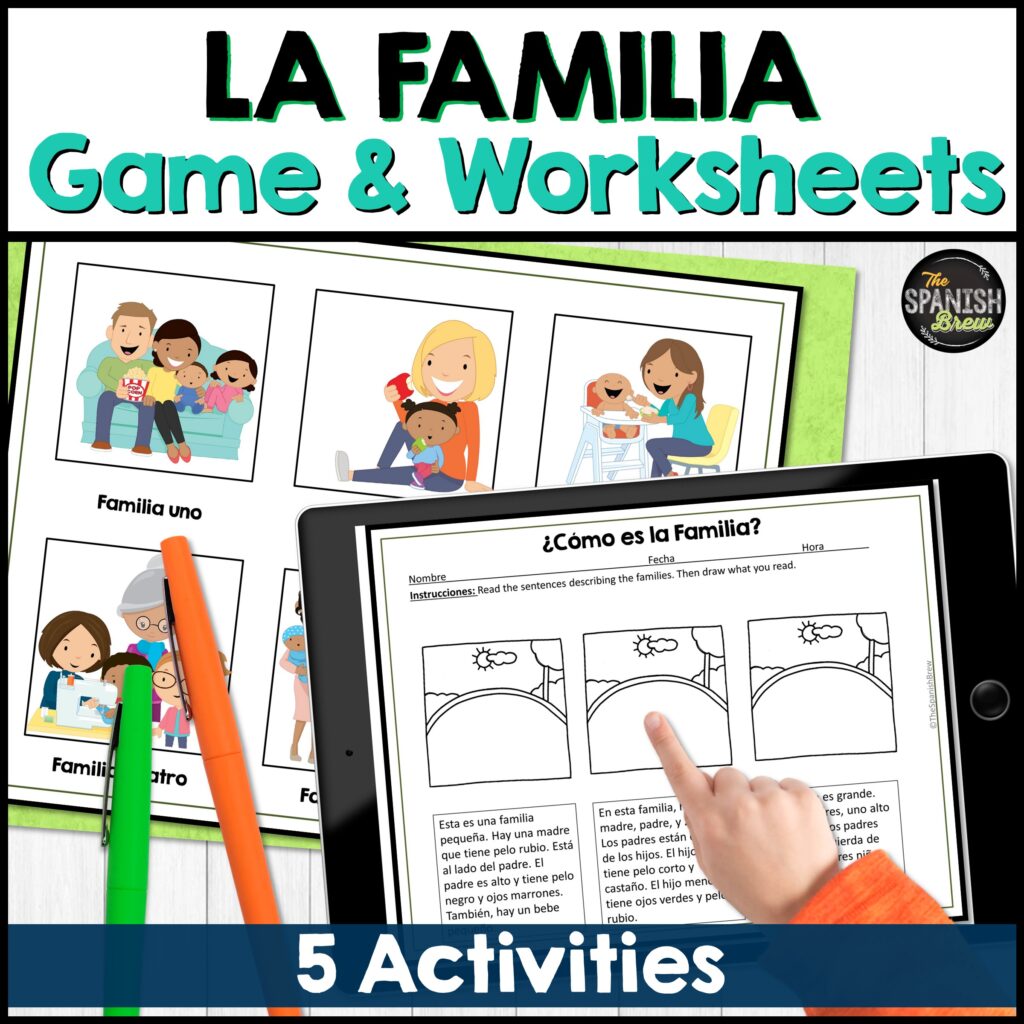
This fun Spanish game plays just like “I Spy,” and it’s a great way to kick off class or wrap up the day. The first student picks something in the room and says, “¿Qué ves?” followed by a clue in the target language—something like Es algo que tiene cuatro patas y está cerca de la ventana. The next student takes a guess.
If they get the correct answer, they’re now the describer. If not, the rest of the class can jump in and guess. I love how this game keeps students on their toes and constantly listening for new vocabulary.
I detail the full directions of how to make your own version here.
📌 Teaching Tip: Make a set of sentences ahead of time with classroom objects if your students are beginners. You can also assign roles for larger classes—one student draws, another gives clues.
💡 Use this as a scavenger hunt, or adapt it for virtual learning by playing in a Google Meet breakout room where students describe items in their homes!
🧠 Want to save time? Check out my ready-to-go versions for food, family, house, bedroom, and classroom vocabulary here.
Board Games

Bring the power of a classic game to your world language classroom with a custom game board and a set of cards full of circumlocution clues. Students roll dice, land on a color or space, and must guess a vocab word based on a description their teammate gives. Each team member gets a turn, and only Spanish words are allowed—no English translation!
I like to call this “Catch Phrase meets Chutes & Ladders” in Spanish class. It’s competitive, it’s creative, and it uses target vocabulary in context.
Want to make your own board game for Spanish class? Here are my step by step directions. Or save yourself some time and check out these that I made for my class: family, food, & house.
📍 Pro tip: Throw in an explosion card for a twist—if students get three wrong answers, they go back to start!
3 veces

Get your students practicing their circumlocution skills by giving them clues in Spanish about their vocabulary words. Divide your vocabulary list in half, write the clues, and let them play with a partner.
This is the true game of circumlocution—and it’s so simple you can use it on the fly. One student gets a word (or draws a playing card), and then must describe it in three different ways, all in Spanish, without using the target word.
For example:
Target word: La manzana
Clue 1: Es una fruta.
Clue 2: Es roja o verde.
Clue 3: A veces está en el almuerzo.
The partner guesses. Then they switch roles!
Check out some examples here.
🎉 You can even make this a bulletin board station or laminate the clues and use them throughout the school year.
📚 Want to save time? I have a full set of cards ready for use here. Great for working in pairs or small groups.
🏠 Bonus: This works in-person or for virtual learning (yes, even on Google Meet). Just screen-share the word and let the first team try their luck!
Pasapalabras

This interactive game is ideal for a quick vocab review and works especially well near the end of the game or class.
How it works:
- Student A faces the front of the room, where you project three vocabulary words.
- Student B faces away (no peeking!).
- A gives clues in Spanish to get B to say the words.
- Once guessed (or skipped), they switch roles.
- After a few rounds, everyone rotates.
This game pushes students to think quickly, describe effectively, and process clues—all in the target language. It’s a fun activity that gives new students and seasoned ones a moment to shine.
🧠 For novice low learners, you can scaffold this with simple vocab words. For more advanced levels, use themes like accidents, natural disasters, or Spanish culture.
🌍 Try this pre-made Pasapalabras game on accidents.
La serpiente
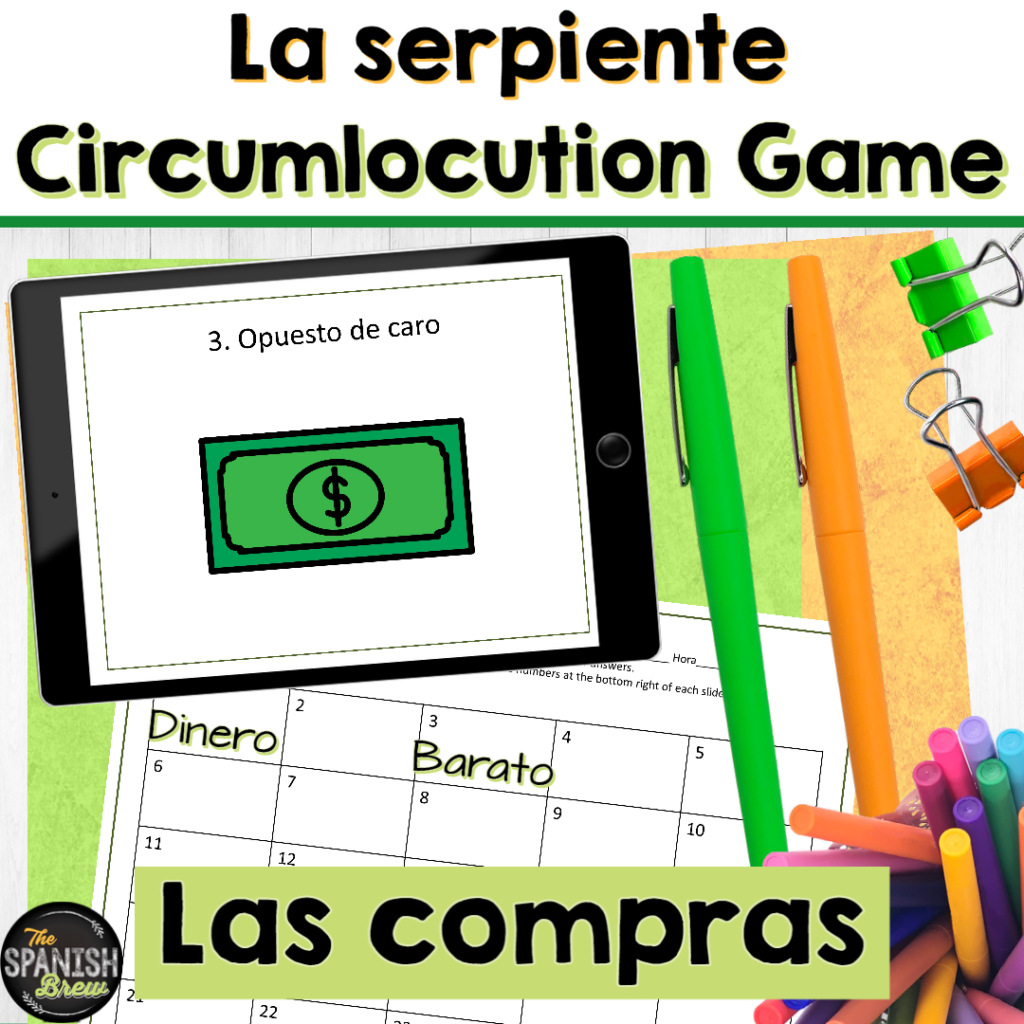
This is hands-down my students’ favorite review game. It’s fast-paced, physical, and ideal for getting in lots of reps before a quiz or test.
Here’s how it works:
- Prepare 25 circumlocution cards (or however many desks/students you have).
- Place one card on each desk. Number them.
- Students grab a blank piece of paper and number it 1–25.
- Each student starts at a different desk.
- Give them 15 seconds to read the clue and write their first guess.
- When time’s up, they move to the next student’s desk.
Keep the time limit short to add intensity and focus. At the end, read the correct answers aloud. Highest score wins!
Looking for an example game? Check out this one on clothes.
✅ Great for:
- Spanish vocabulary recall
- Practicing for final exams
- Integrating classroom routines
📝 Extension Ideas
Looking for different ways to use these games? Here are some extras I’ve used in my own classroom:
- Draw lines between vocab categories on the board and make it a team competition
- Turn 3 Veces into a classwide Quizlet Live showdown
- Make your own circumlocution card decks based on your current lesson plans
- Use the games during back-to-school, after break, or to wrap up your language classes
- Integrate the clues into your world languages bulletin boards
🎉 Final Thoughts
If you’re looking to make the teaching of foreign languages more fun, dynamic, and sticky—circumlocution games are the way to go. These games make your Spanish students the center of the learning process, build their language skills, and turn your classroom into a place where new words are welcomed and wrong answers are part of the journey.
I hope you find a fun game (or five!) from this list that works with your own students.
Have a favorite circumlocution activity of your own? I’d love to hear about it in the comments—or tag me on IG with your Spanish class in action!
Happy teaching!
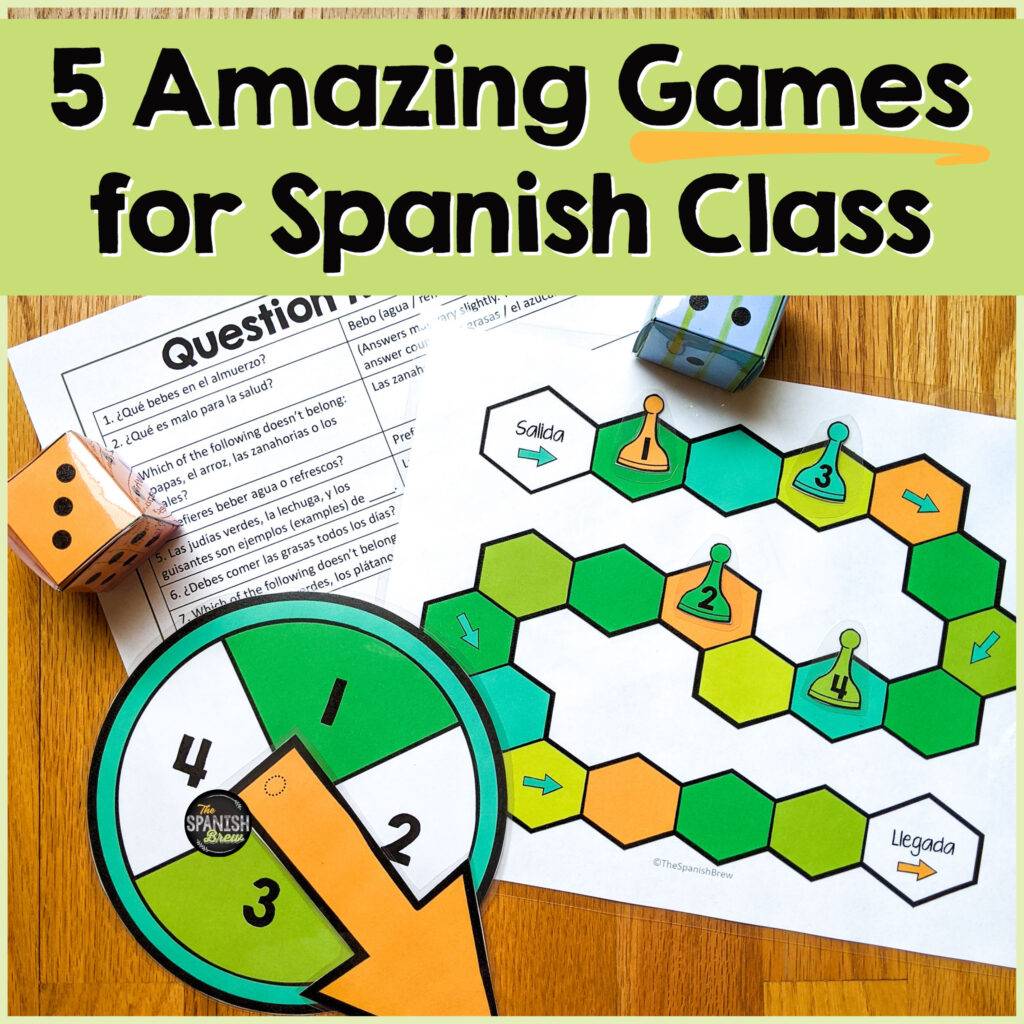
Related Posts:
Have You Heard About my Favorite Circumlocution Game for Spanish class?
Board Games in Spanish Class? Get Students Practicing Circumlocution!

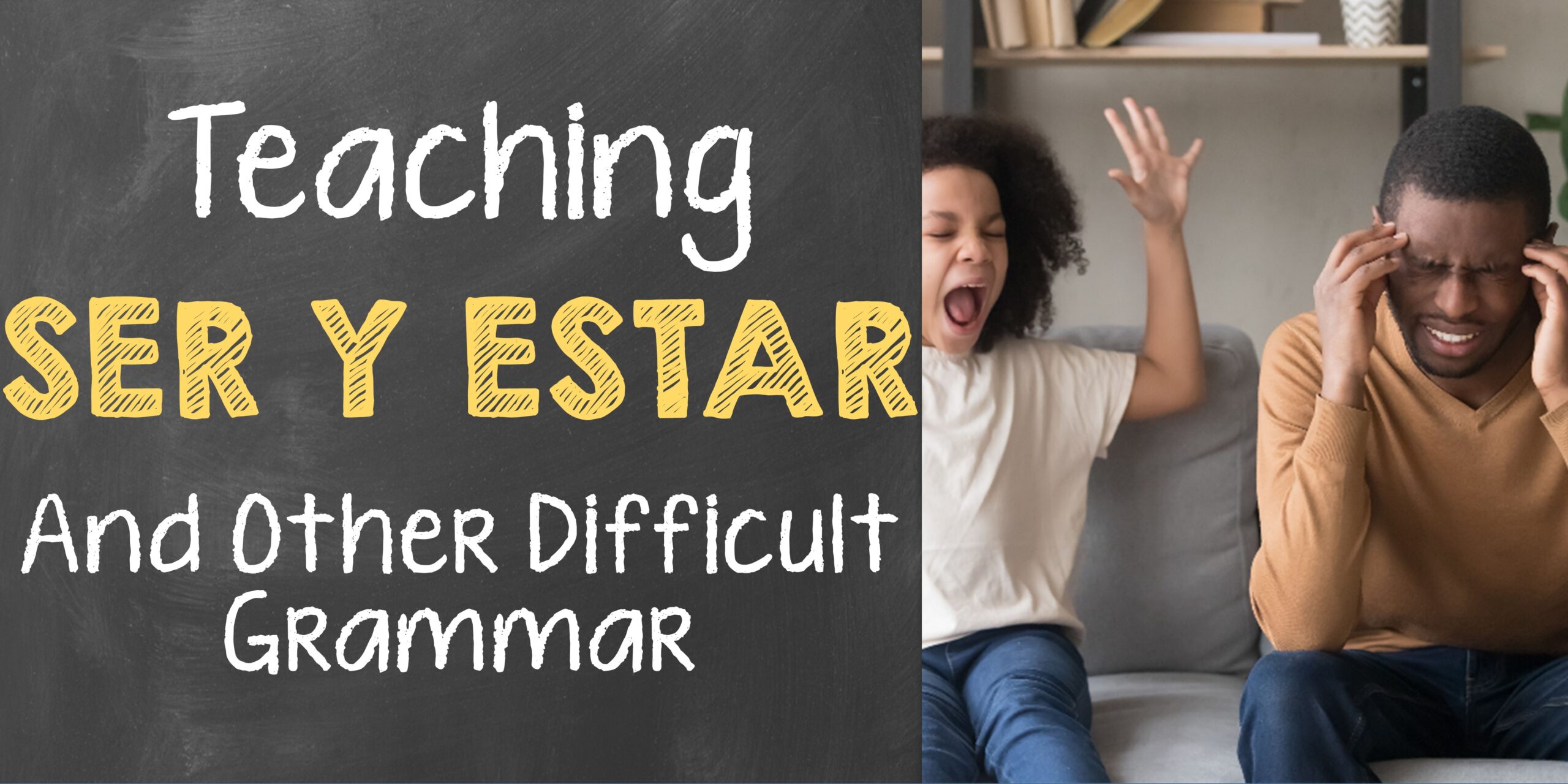
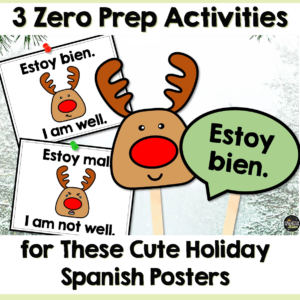
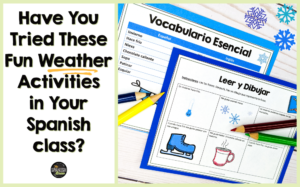
No Comments